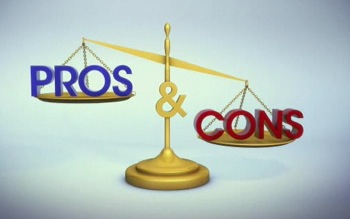Downsides of artificial turf on LGUSD elementary school corridors & courtyards
The downsides of using artificial turf outweigh the upsides. Image from aprilsmith.org.
Below is a pared down list of downsides to using artificial turf, focused on concerns most relevant to areas of campus beyond the fields. This includes spaces designed to be used as "outdoor classrooms" where it's envisioned the community's 5-11 year old students will gather, eat, and play during class time, recess, and lunch, such as outdoor corridors and courtyards, including a courtyard used daily by kindergarteners.
Question whether motives for installing artificial turf outweigh these compelling reasons to dismiss artificial turf, especially given that alternatives are within reach...
- HEAT - Artificial turf, even with plant-based infill, gets HOT. For example, on a sunny, 80 degree day, it might be 110 degrees on artificial turf with cork infill. Last schoolyear, we had 77 days above 80 degrees. Climate change is likely to make our campuses even hotter, and on more days. Heat will radiate to nearby classrooms. Young children are closest to the hot surface, least capable of body-temperature regulation, and least able to recognize their own heat distress--- or advocate for themselves in such cases.
- TOXICITY - Lead in the "grass blades", PFAS "forever" chemical bioaccumulation, methane and ethylene off-gassing, toxins found in infills marketed as "plant-based". These campuses are intended for our youngest children who are physically closest to the highest heat and to the toxic surface. Possible routes of exposure for artificial turf chemicals are inhalation, ingestion, or through the skin. The early developmental stage of this student population puts them at greatest risk of harm from such exposure. They are also most likely to engage in hand-to-mouth behavior. Turf chemicals can outgas at a much faster rate when they are heated. All elements of the turf with use and extended weather exposure can break down into microscopic particles forming an unhealthy respirable dust. Independent, peer-reviewed, published studies raise the alarm on types of toxins, their concentration, and their synergies. Absence of proof of harm is not proof of absence of harm.
- TOXIN & MICROPLASTIC RUNOFF INTO WATERWAYS - Causes water pollution, endangering our drinking water supply & aquatic life.
- MAINTENANCE UNDERESTIMATED - Needs continual cleaning of dried-on food and beverage spills, gum, sweat, phlegm, animal feces/urine (dogs, birds), etc. Application of disinfectants. Removing weeds and moss. Sweeping/leaf blowing. Brushing to keep pile up. Repairs. Snags, tears, punctures from furniture. Violating usage restrictions and failure to keep up with maintenance could void warranty.
- CONTRADICTS EVERYTHING WE HAVE BEEN TEACHING OUR CHILDREN ABOUT PLASTIC - Artificial turf is considered a non-essential single-use plastic. Refuse it. Industry concedes there are NO recycling plants in the US.
- CONTRADICTS LGUSD MISSION STATEMENT - Part of the mission statement of LGUSD is to develop, through role modeling, globally responsible citizens demonstrating stewardship. LGUSD will not be modeling global responsibility or stewardship if it opts to unnecessarily become a consumer of a convenience product that causes toxic pollution from harvesting of natural resources, through manufacture, through degradation over years of exposure to the elements and foot traffic, and finally through disposal. Schools, as not-for-profit institutions, need to stop externalizing the costs of the not-for-profit business that they do.
